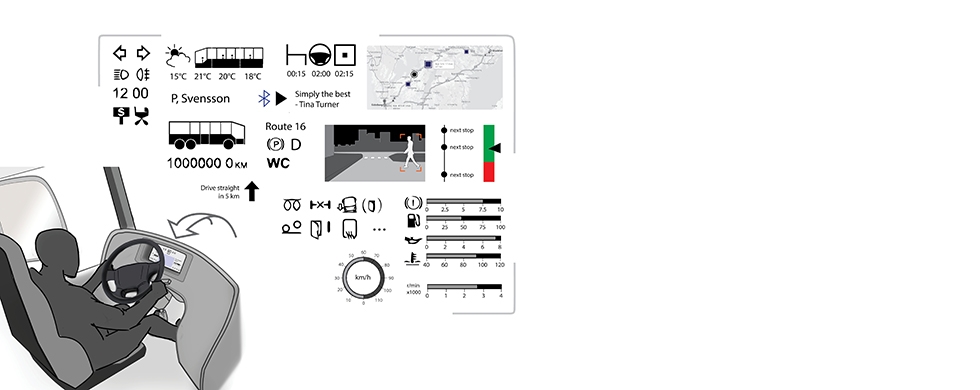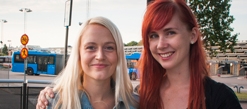Instrument Cluster
Redesign of Instrument Cluster , User-Centered Product Development at Volvo Bus Corporation
Summary
The report describes a Master Thesis project at Chalmers University of Technology conducted with Volvo Bus Corporation. The project concerns information handling and perception through the instrument cluster from the bus drivers’ perspective. Bus drivers are increasingly exposed to more complex traffic environments with more technically advanced busses. The project purpose is to understand the factors affecting the drivers and conclude how the instrument cluster can provide information in a good way to support easy perception. The scope is to map different user needs and present the holistic layout and design, as a base for more detailed design of the instrument cluster.
The current instrument cluster is placed on the dashboard, has analogue pins and lamps visualizing warnings and is controlled by a stalk placed by the steering wheel. Depending on type of action and situation, the driver perceives and processes the information in different ways, which contributes to varied amounts of workload. Too little workload as well as too much workload can affect the performance of the person negatively when performing a task. To elicit user needs, data collection through user studies was performed. The data was analyzed and represented with help of several different methods, concluding the needs of the drivers. The bus drivers have different work environments and needs, depending on what type of route they drive. Some aspects are common, while others are more specific for the three identified groups: city, intercity and tourist drivers. The information presented was therefore concluded to be task oriented, rather than user oriented. Use cases with defined tasks were therefore used as a base for the generated concepts. The new system was decided to focus on solving the issues with problem handling and perception of information in the instrument cluster. The new system will be connected to support functions such as traffic management and workshop to maximize the convenience at work for the drivers. Information about errors and problems will be sent directly to the concerned function to decrease risk of corrupting information. The concepts generated shows different ways of conveying information to the three types of drivers, since it was determined that their needs of information perception differed due to the different situations they were exposed to. The concepts have a standard screen with relevant information that is always displayed and has adaptable areas where information is shown, depending on situation and individual preferences are shown. Through evaluating the generated concepts together with bus drivers some aspects that needed to change and improve with the concepts were found. In general, the drivers wanted less information on the instrument cluster, enabling faster overview and additional functions to be preferably placed on secondary information displays. The final, overall features of the concepts were created and then changed according to the evaluation sessions in the second design phase. The final concept describes the redesigned bus system in its totality and presents graphical variations of the instrument clusters for the three different types of drivers and the situations they are exposed of. The scope and implementation of the project produced new and interesting findings that answered the questions stated. The findings and concepts can be of use for further development of instrument clusters at Volvo Bus Corporation.
Skriv ut ![]()


